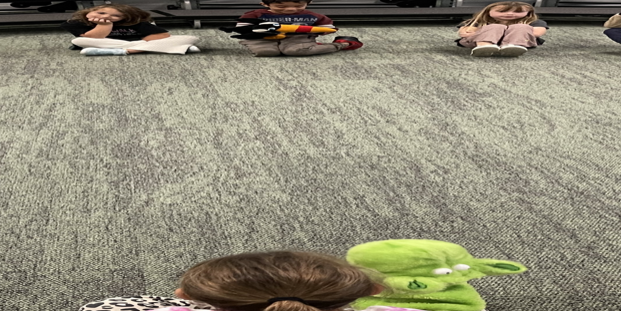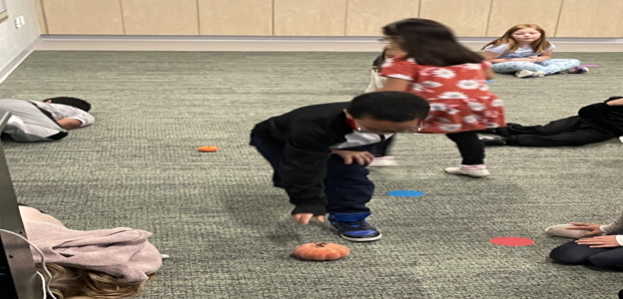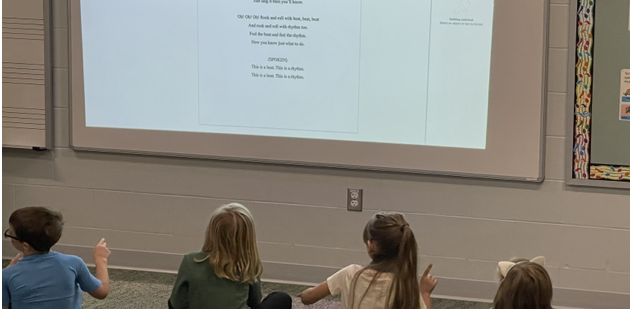 .
. 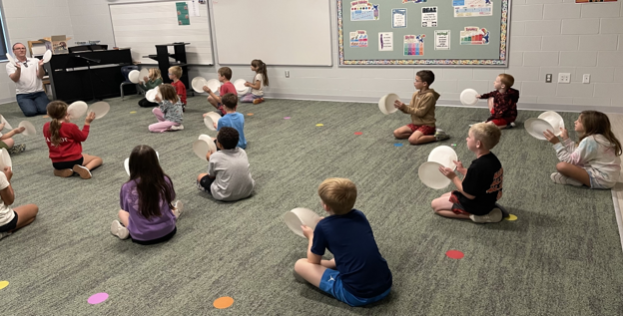
During music this past month, 1st and 2nd grade students have been working hard to expand their music vocabulary! Second graders began by exploring the difference between beat (a repeating pulse that can be felt in music) and rhythm (a pattern of long and short notes/rests). They’ve done this through a variety of activities, including playing rhythms on the step bells, creating beat movements to a song, working on a tune called Feel The Beat that “sings” the definition of both terms (seen in the picture on the top left), using rhythm cards to review the patterns learned from 1st grade, and playing a game called Charlie Over The Ocean while several students played both the beat and the rhythm. One of the students’ favorite activities was one called “I’ve Got Beat, I’ve Got Rhythm” (seen in the picture on the top right) where they used paper plates to pat the beat on the floor or tap the rhythm in the air of a well-known song. Later in the month they began to explore dynamics (loud/quiet) by using the specific words used in music (piano and forte), which tied in nicely to an activity that they did with Red Cedar Chamber Music back in September! A couple of their favorite activities working on dynamics were the game Black Snake/Cat (basically a musical version of the game Hot & Cold) and revisiting a song from last year called In The Hall of The Mountain King (seen in the picture on the middle right) while incorporating their newly learned dynamics.
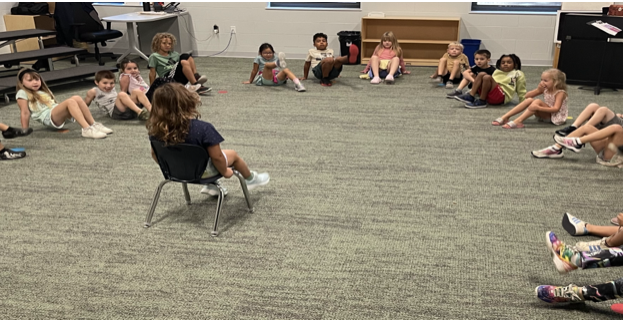

1st graders spent a good chunk of September growing in their understanding of the steady beat. They did this through following Mr. Thomsen’s beat, playing along on instruments with the beat, choosing their own movements to the beat, and drawing the beat on our whiteboard. One of our closing activities for this unit was called Monkey See, Monkey Do (seen in the picture on the middle left) where students had to be the “monkey in the middle” and come up with a move to the beat that everyone followed. In October they moved on to focusing on pitch (highness/lowness of sound), which tied nicely into a unit on sound they’d done in their regular classroom. Students did several activities with their voices and instruments, paying attention to how the pitch was changing. Without a doubt though, their favorite activities were our last ones: Fang & Twang (a puppet activity where 2 students sing back & forth seen in the bottom left) and Pumpkin Pumpkin (a guessing game where students try to figure out who took their pumpkin by listening to their singing voice seen in the bottom right).
